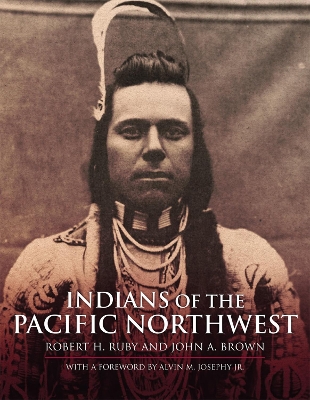More than one hundred Indian tribes in fifteen language groups inhabited the area of Washington, Oregon, Idaho, and Western Montana in the nineteenth century. This important work, the first composite history of the region's native inhabitants, covers the period roughly from 1750 to 1900, from the first white contacts to the aftermath of the Dawes Act. It is a valuable resource both for the serious scholars and general readers.The cultures of the Pacific Northwest tribes were as diverse as their lands. Coastal peoples, such as the Makahs, hunted whales in huge wooden canoes thirty-five feet long. Near Puget Sound they developed an advanced technology and a stylized art in carved wood. Whites were shocked by the head flattening practiced by some coastal peoples and by the potlatch ceremony, in which they gave away their possessions. Farther inland, along the Columbia River, tribal economies centered around the salmon. The smoked fish was traded all over the region. On the east the horse transformed the way of life of the Shoshonis, Nez Perces, Kalispels, and Blackfeet. Each spring they crossed the Rockies to hunt the buffalo and fight for control of the hunting territory.
The first whites to enter the Pacific Northwest were Spanish mariners from the south and British and American traders stopping for furs on their way to China. Later the British North West Company and Hudson's Bay Company established trading posts. The whites brought gimcracks, guns, molasses, tobacco, alcohol, and disease. They took the pelts of the sea otter, seal, beaver, and buffalo in return.
Missionaries and settlers followed the traders. Catholic black robes and Protestants in buckskins competed with mixed success for the Indian's souls, while at the same time native religions held sway. Indian religious leaders, such as Spokane Garry and the Dreamer prophet Smohalla, were almost as important as the fighting chiefs.
By the 1840s epidemics had cut the Indians' numbers by two-thirds,. The few who survived were too weak to drive out the white settlers. Only truly extraordinary individuals could resist the changes introduced by the whites: the appropriation of traditional food-gathering and hunting grounds formerly held in common, the introduction of a cash economy, the demands of Christianity, confinement on reservations and farms and in schools, and allotment.
Many extraordinary individuals are portrayed in this history. The authors have written their account colorfully and movingly from the Indian point of view, and they effectively present the special identity of Pacific Northwest Indians.
- ISBN13 9780806121130
- Publish Date 15 March 1988
- Publish Status Active
- Publish Country US
- Imprint University of Oklahoma Press
- Format Paperback
- Pages 304
- Language English
